Cross Team
Frontend
Architecture

<Majid-Hajian />
<Jakob-lind />
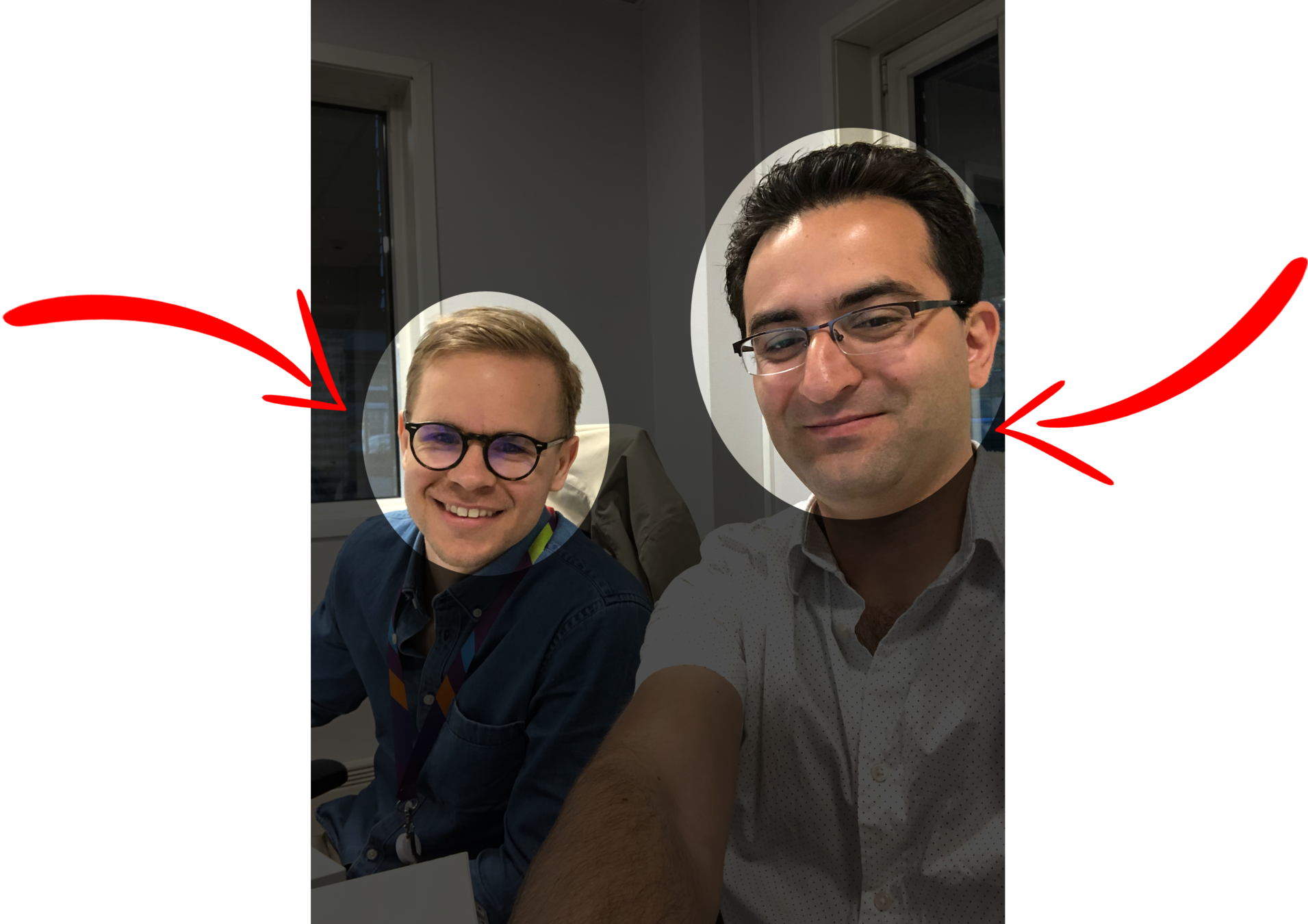
Rapidshop B2B
First: Cross team frontend architecture today in Telia
Telia Styleguide
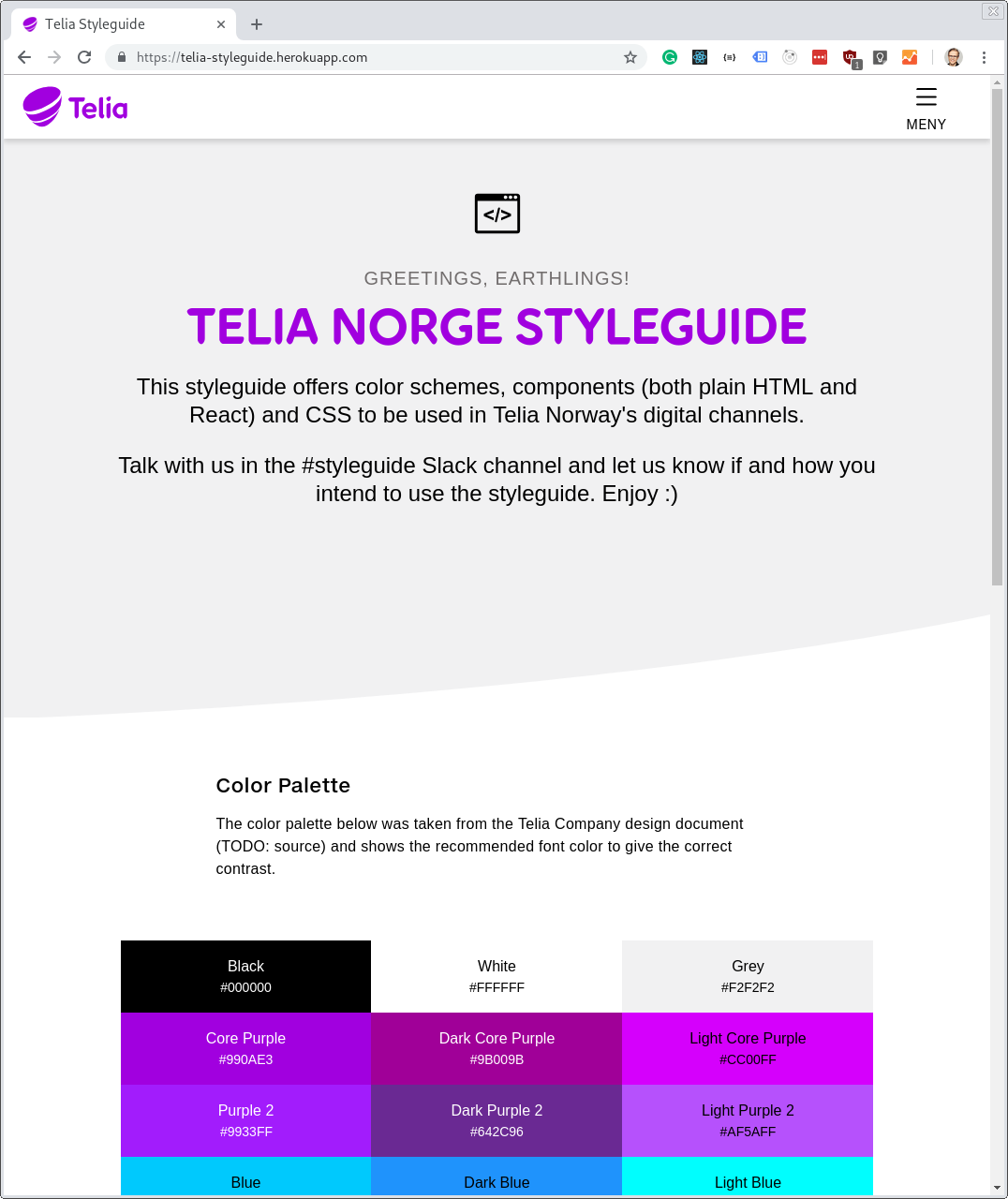
Telia.no
Webshop
App
Webshop B2B
Many apps and teams
One look-and-feel
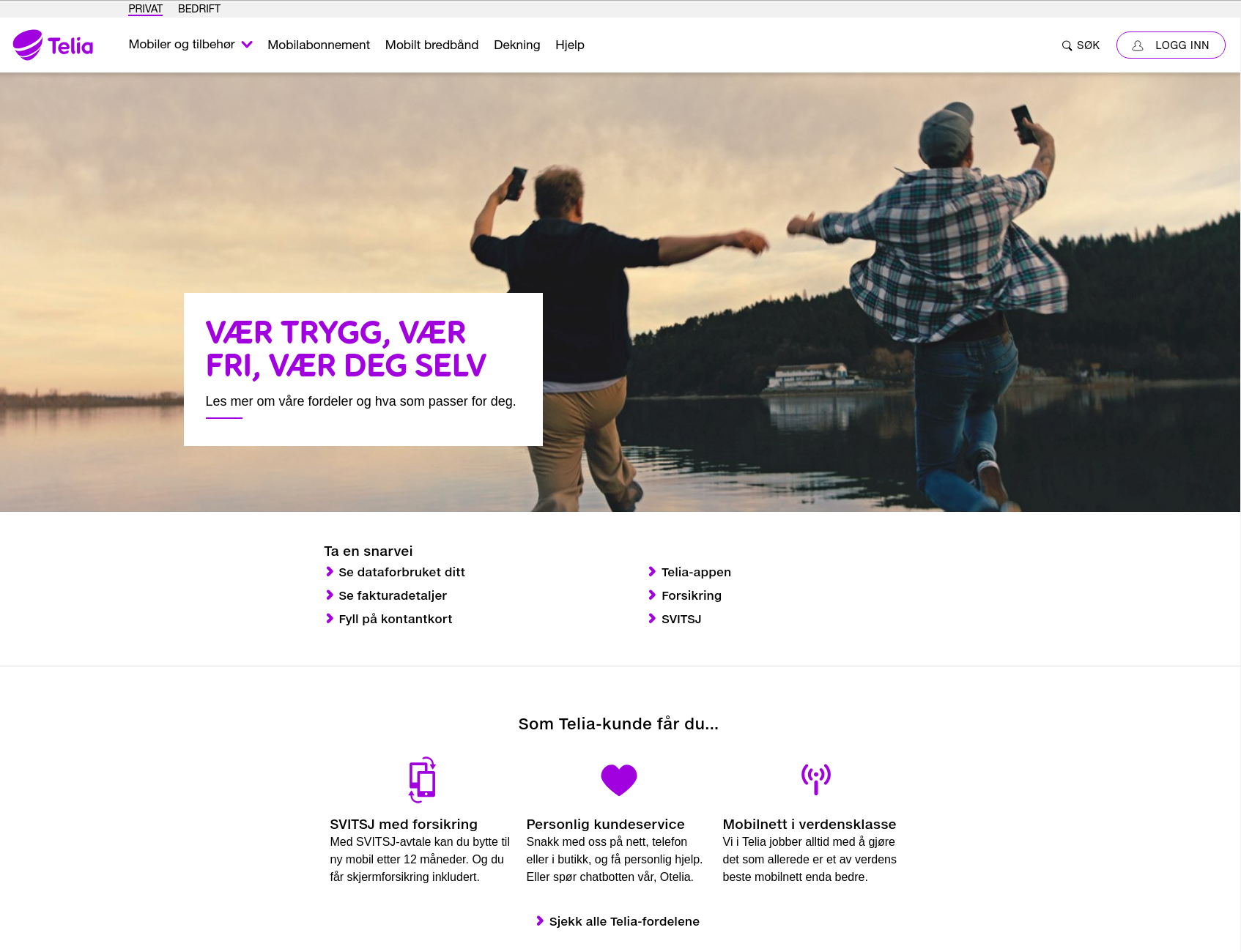
Min Side
Min Bedrift

1. Styling: CSS, icons and fonts
The styleguide is two things
2. A react library
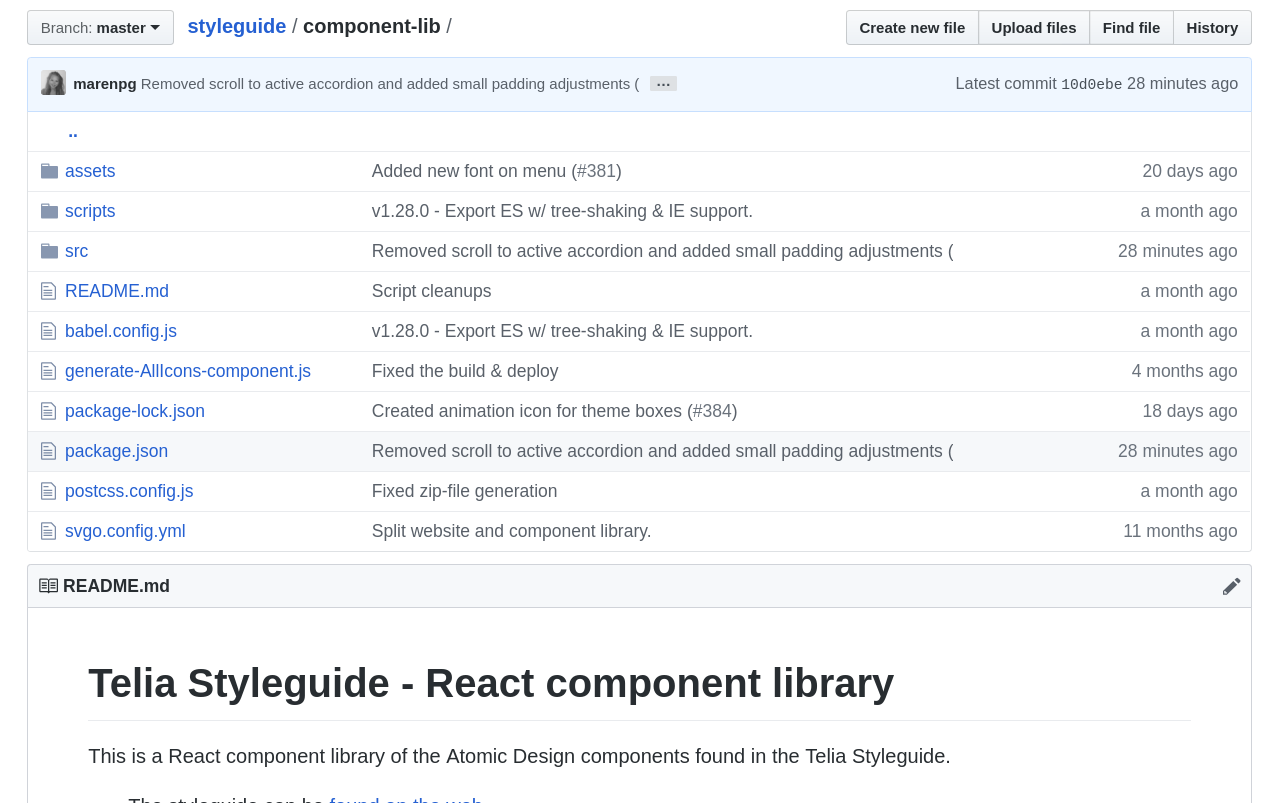
The styleguide has increased collaboration, and decreased time for developing UI
But there are some limitations
It's an empty skeleton
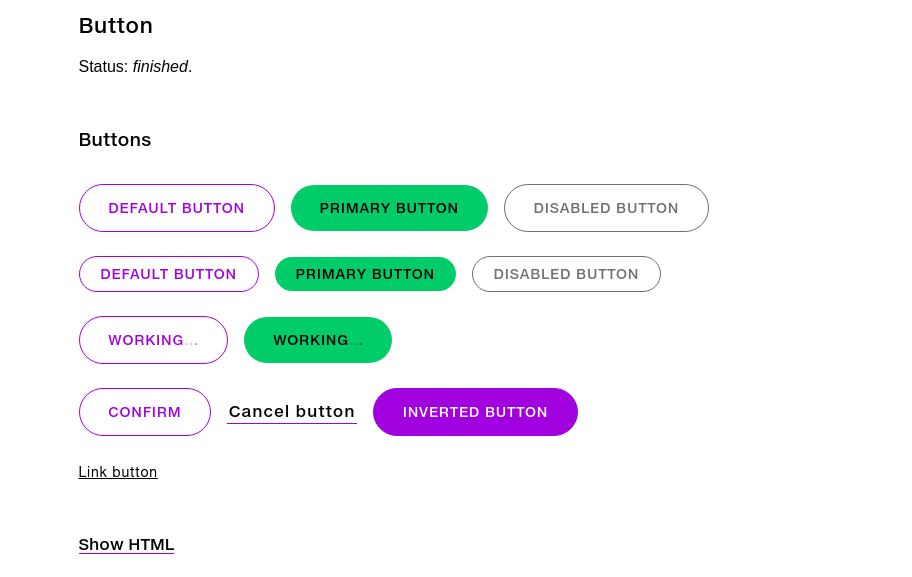
CSS
React presentational components
React container components
Javascript logic / unit tests
Hosting and opsing
CI/CD pipeline
A complete app
Styleguide
Every channel
have to code
CSS
React presentational components
React container components
Javascript logic / unit tests
Hosting and opsing
CI/CD pipeline
Still lots of duplicated work


More examples of duplication





When every channel is responsible for hosting, it's easy to get out of sync
Web components


Why we started to look into this
Selling to existing customers from min bedrift
webshop
Requirements:
- End user should think he is in min bedrift
- Not tightly coupled to min bedrift. Should be easy to move if min bedrift would be shut down
Min bedrift
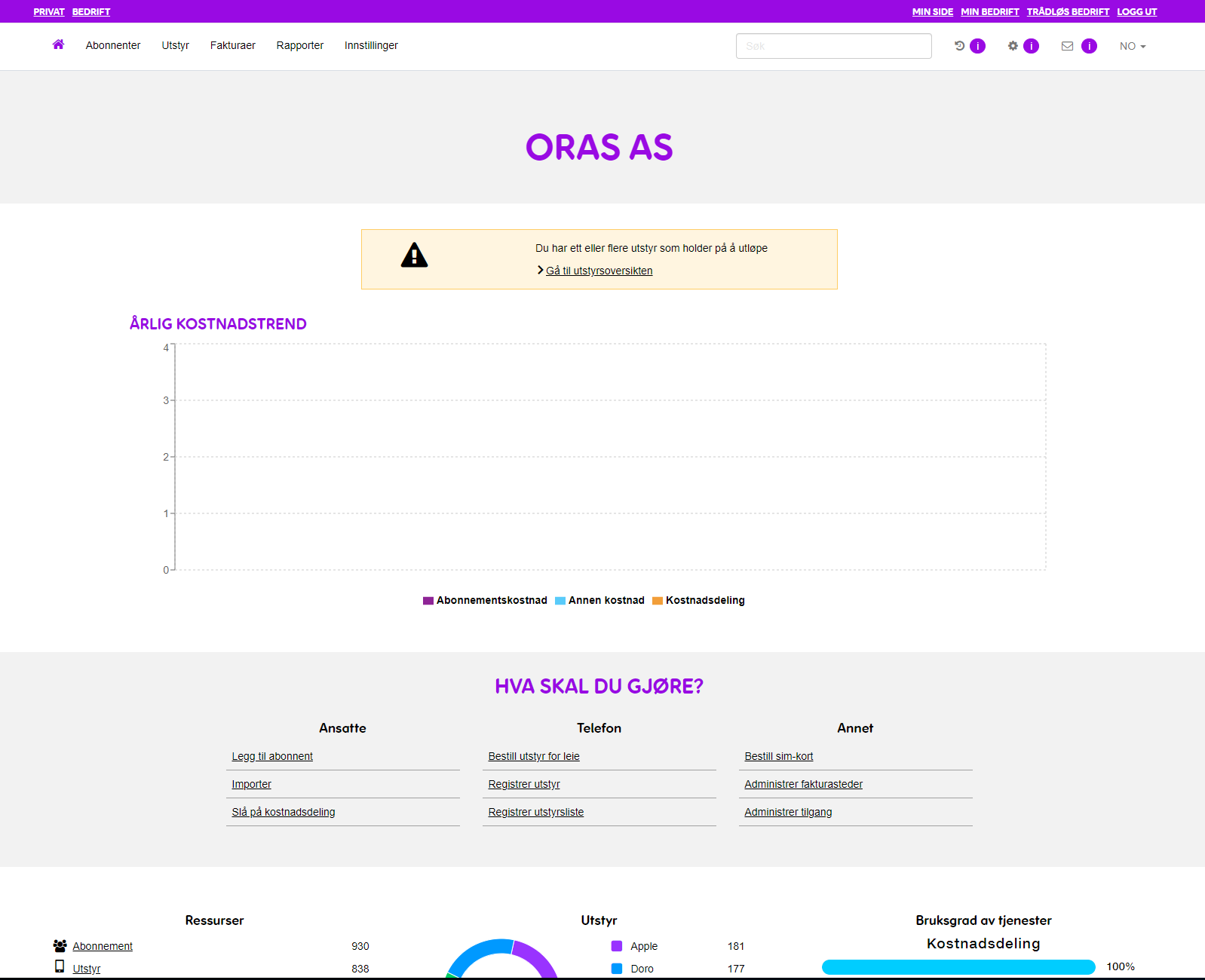
Our options
1. Separate web app. Redirect to webshop and then back again to min bedrift
2. Develop in min bedrift code base
4. Web components
- Sharing authentication is tricky
- Not seamless user experience
3. "React library"
- Large code base, slow to work with
- With Get/TDC migration, we dont know how long min bedrift will live
- Requires that min bedrift uses React
- Versions inconsistencies
Winner!

Web components
With web components we can code everything in a component and ship it
- Styling (css, fonts, icon)
- Interactivity with JS
- Data fetching
- Hosting
The components are new native DOM elements
<telia-b2b-shop name="Minbedrift netbuttik"></telia-b2b-shop>



Web components is a set of w3c standards

Supported by all major browsers
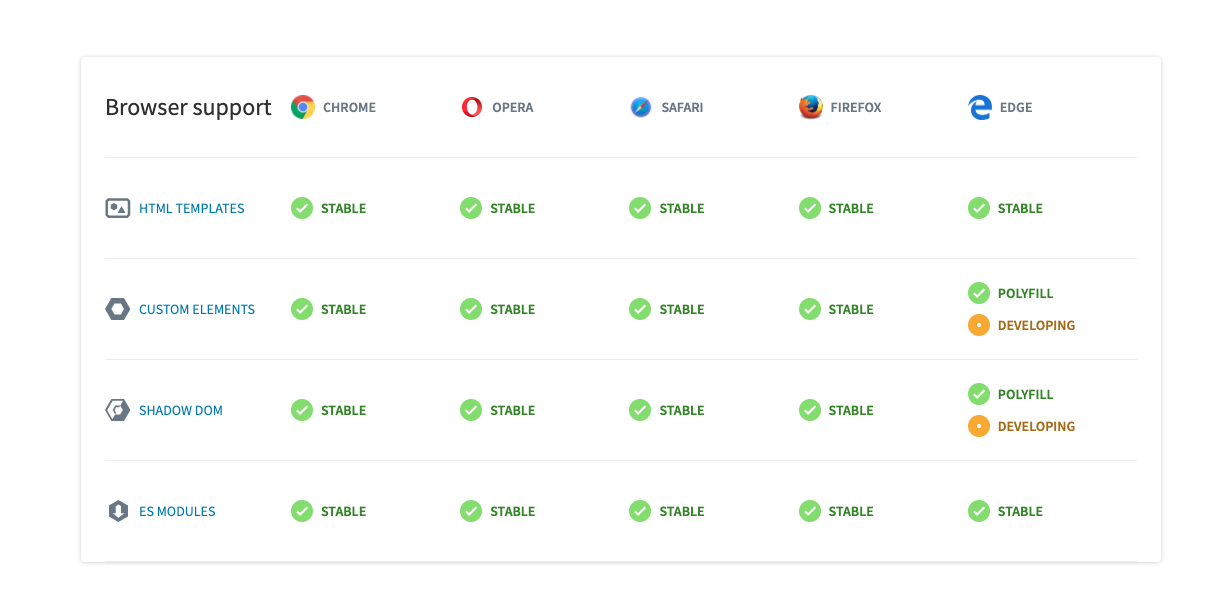
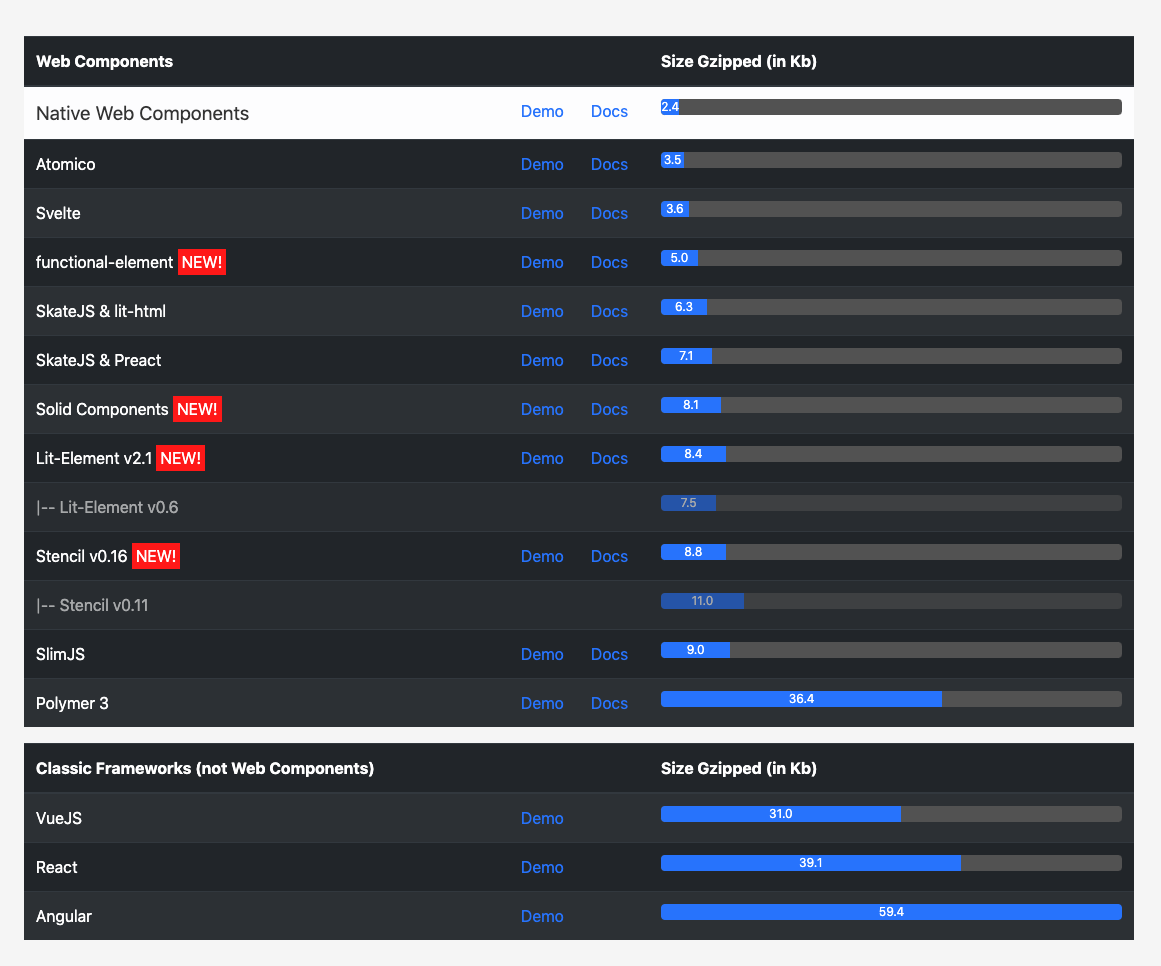
Using it is as easy as using a script tag
<body>
<telia-b2b-shop name="Minbedrift netbuttik"></telia-b2b-shop>
<script src="/telia-b2b-shop.js" type="module"></script>
</body>It can be bundled in an NPM library too

You can think of web components as a modern version of iframes that works

With web components every component is a complete self hosted mini app
CSS
React presentational components
React container components
Javascript logic / unit tests
Hosting and opsing
CI/CD pipeline
CSS
React presentational components
React container components
Javascript logic / unit tests
Hosting and opsing
CI/CD pipeline
CSS
React presentational components
React container components
Javascript logic / unit tests
Hosting and opsing
CI/CD pipeline
Styleguide







https://micro-frontends.org/




Organisation in Verticals
Monolithic Frontends

let's dive into the details
HTML Template
Custom Element
Shadow DOM
ES Modules
Previously, HTML imports were also a part of it, but with ES6 modules, HTML imports became deprecated.
Web components consist of:
<template id="template">
<div id="container">
<img class="webcomponents" src="logo.svg">
</div>
</template>HTML Template Tag
var template = document.querySelector('#template');
var clone = template.content.cloneNode(true);
var host = document.querySelector('#host');
host.appendChild(clone); <template id="template">
<div id="container">
<img class="webcomponents" src="logo.svg">
</div>
</template>HTML Template Tag
var template = document.querySelector('#template');
var clone = template.content.cloneNode(true);
var host = document.querySelector('#host');
host.appendChild(clone);Will not render until it is activated
Has no effect on other parts of the page - scripts won’t run, images won’t load, audio won’t play - until activated
Will not appear in the DOM
Shadow DOM
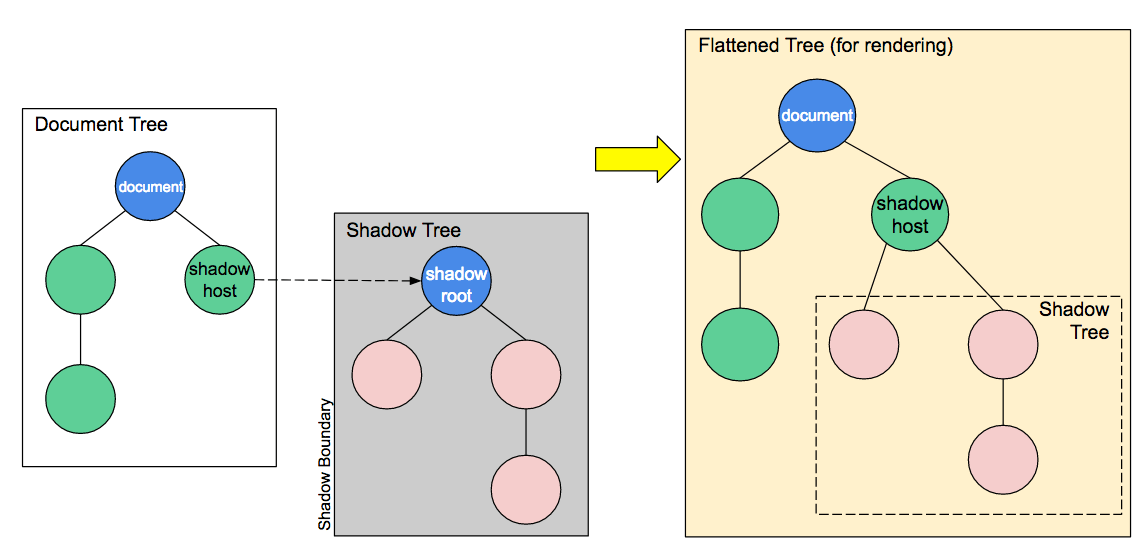
Shadow DOM
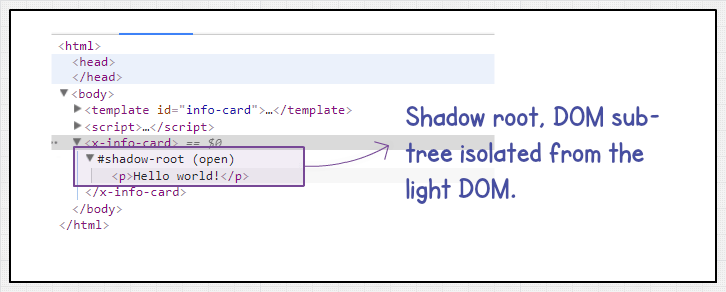
const header = document.createElement('header');
const shadowRoot = header.attachShadow({mode: 'open'});
shadowRoot.innerHTML = '<p>Hello world!</p>'; Custom Elements
class CustomButton extends HTMLElement {...}
window.customElements.define('custom-button', CustomButton);
<custom-button></custom-button>
Acts like a div
Custom Elements
class CustomButton extends HTMLButtonElement {...}
window.customElements.define('custom-button', CustomButton, {extends: 'button'});<custom-button></custom-button>
Acts like a real button
Custom Elements Lifecycle
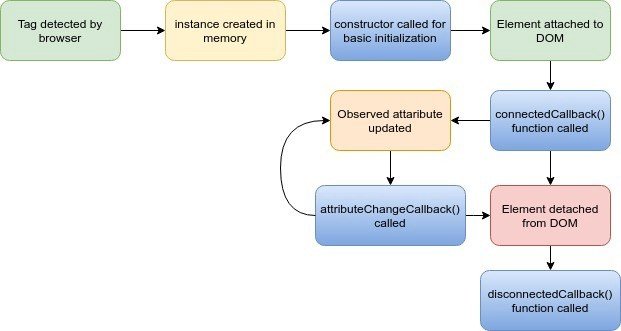
connectedCallback()
disconnectedCallback()
attributeChangedCallback()
adoptedCallback()
class Custom-component extends HTMLElement {
constructor() {
super(); // always call super() first in the ctor.
...
}
connectedCallback() {
this.addEventListener("mouseover", e => {
this.setAttribute("style", "color:pink; font-style: bold;");
});
this.addEventListener("mouseout", e => {
this.setAttribute("style", "color:black; font-style: bold;");
});
this.addEventListener("click", e => {
this.target="_blank";
});
}
disconnectedCallback() {
...
}
attributeChangedCallback(attrName, oldVal, newVal) {
...
}
}Custom Elements / ES6 Class
ES MODULE
<script type="module" src="telia-custom-component.js"></script>
<telia-custom-component></telia-custom-component>Communication
between Components on a page
<script>
document.querySelector('custom-input').dispatchEvent(new CustomEvent('customevent', {
detail: { prop: true }
}));
customElements.whenDefined('progress-bar').then(() => {
document.querySelector('progress-bar').addEventListener(
'customevent', function () {
// do something
}
});
});
</script>Text

class TeliaContactElement extends HTMLElement {
constructor() {
super();
const template = document.querySelector('#contact-card-template');
// Shadow DOM
this.attachShadow({ "mode": "open" });
this.shadowRoot.appendChild(template.content.cloneNode(true));
}
static get observedAttributes() {
return ["name", "email"];
}
attributeChangedCallback(name, oldValue, newValue) {
this[name] = newValue;
}
connectedCallback() {
this._$name = this.shadowRoot.querySelector("#name");
this._$email = this.shadowRoot.querySelector("#email");
this._render(this);
}
_render({ name, email, avatar }) {
this._$name.textContent = name || 'N/A';
this._$email.textContent = email || 'N/A';
const figcaption = document.createElement("figcaption");
figcaption.textContent = name;
figcaption["aria-label"] = "contact name";
}
}
customElements.define("telia-contact", TeliaContactElement);
<template id="contact-card-template">
<style>
.card {
height: auto;
max-height: 299px;
width: 200px;
overflow: hidden;
background-color: #FFFFFF;
border-radius: 10px;
box-shadow: 0 5px 10px rgba(0, 0, 0, 0.1);
text-align: center;
-webkit-transition: .1s ease-in-out;
transition: .1s ease-in-out;
margin: 30px;
padding: 10px;
}
.card:hover {
box-shadow: 0 15px 20px rgba(0, 0, 0, 0.1);
}
</style>
<div class="card">
<h3 id="name"></h3>
<span id="email"></a>
</div>
</template>
<h1>⚡️ Telia Contact ⚡️</h1>
<telia-contact
name="Majid"
email="majid@telia.no">
loading...
</telia-contact>
<telia-contact
email="Jakob@Lind.com">
loading...
</telia-contact>
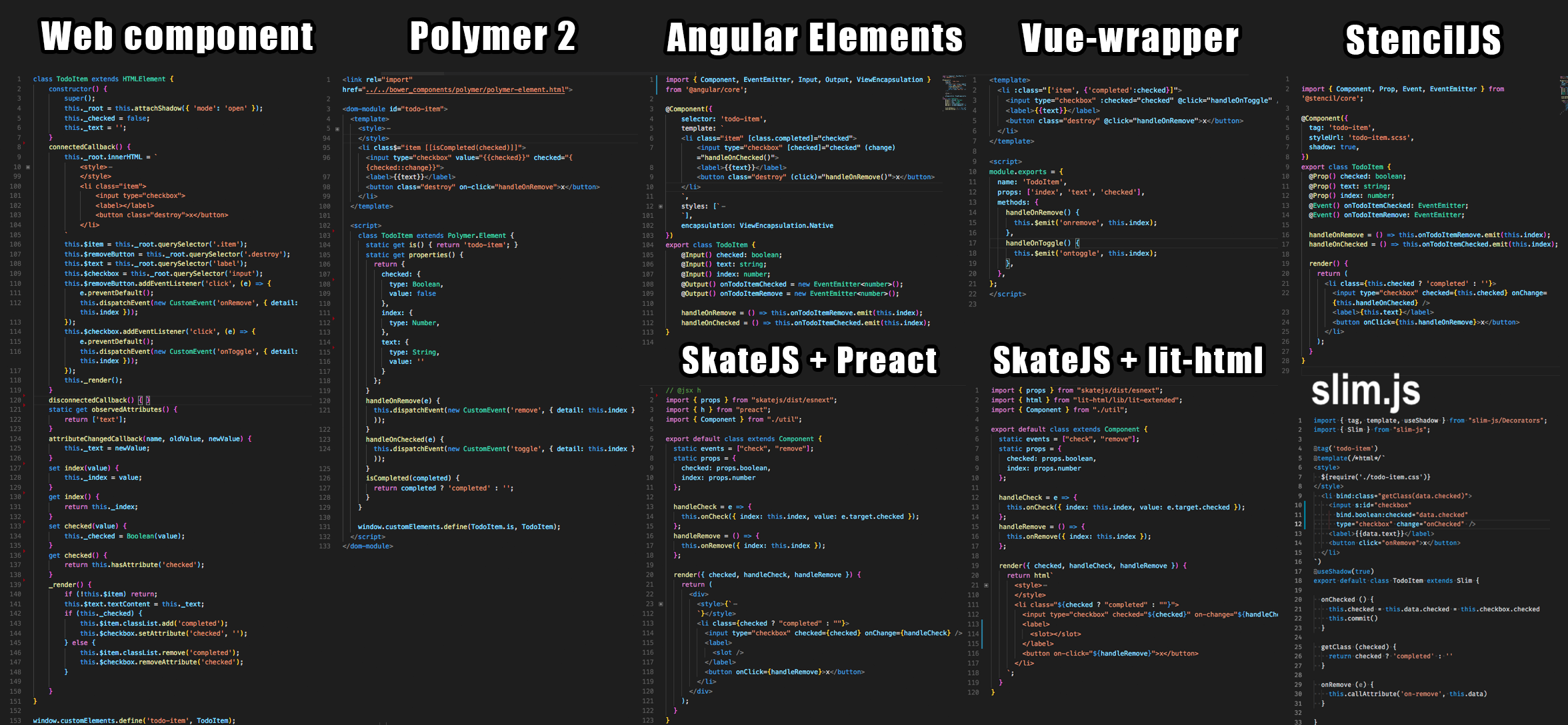
Why use LitElement?
Delightfully declarative
Fast and light
Seamlessly interoperable
Less footprint
Supports Typescripts
Backed by Polymer team / Google
Lit-Element
import { LitElement, html, property, customElement } from 'lit-element';
@customElement('simple-greeting')
export class SimpleGreeting extends LitElement {
@property() name = 'World';
render() {
return html`<p>Hello, ${this.name}!</p>`;
}
}
